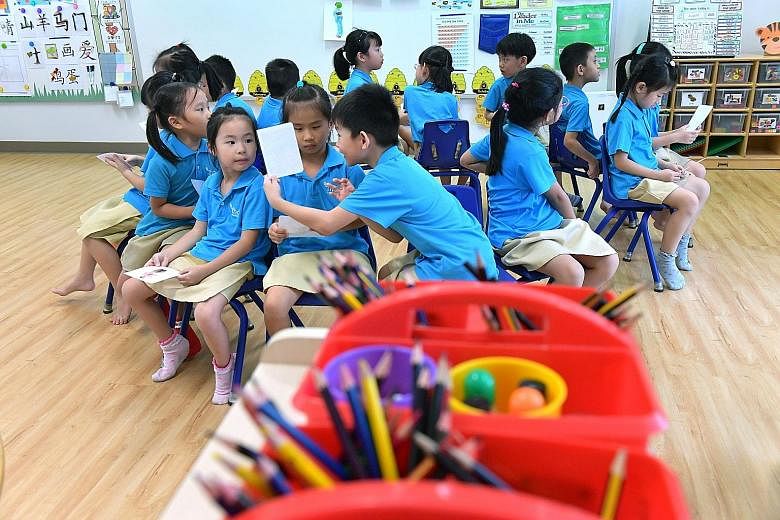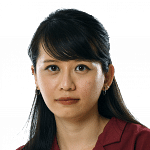News of the Ministry of Education's (MOE) plan to run 50 kindergartens by 2023 - announced at the National Day Rally - has prompted fears among some parents and industry observers that this will mean more academic pressure for pre-schoolers.
But the MOE is looking to challenge those perceptions as it moves to share more teaching and learning resources with the rest of the pre-school sector based on its curriculum to raise teaching standards. They emphasise the value of "purposeful play" and having "quality interactions".
Since last year, a set of MOE-developed kindergarten curriculum resources based on its Nurturing Early Learners (NEL) framework has been delivered to more than 800 pre-schools.
An online portal (www.nel.sg) was also started this year, allowing all pre-school educators to get lesson ideas and share good practices and lesson activities.
No rote learning is involved in the MOE's pre-school curriculum, said Ms Juliet Chia, a senior specialist in pre-school education from the MOE's education services division.
Rather, its NEL framework emphasises the holistic development of a child, and the MOE kindergarten curriculum also has a focus on early childhood bilingualism.
Stated learning objectives do not require a child to be able to spell out certain words, or to know the multiplication tables by heart. Rather, they include goals like having a child be able to enjoy reading and understand what he reads.
-
How kids learn at MOE kindergartens
-
1 Language immersion through Big Book reading
When learning English or one of the mother tongue languages, a teacher guides students in the reading of a picture book. It has been customised to fit the local context and can also include content that teach values, such as respecting diversity.
At the MOE Kindergarten @ Frontier Primary School, for example, children have been reading a story about a girl who meets and makes friends with new neighbours from places like Vietnam or Japan.
During a reading session yesterday, children got up at intervals to learn the character strokes for Chinese words in the story through physical movement, which helps kinesthetic learners who learn through physical activities.
Children may use their hands to "write" in the air, or balance on one leg to illustrate the strokes that make up a character with the other.
2 Learning numeracy through hands-on activities
One of the activities at MOE Kindergarten @ Frontier includes having children work in pairs to count the number of beads on a bracelet - 10 in total. They are then asked to separate the beads and think about what pairs of numbers add up to 10: three and seven, for example, or two and eight. This lays the foundation for mathematics.
3 No homework, but opportunities for family bonding
As part of the Starlight Literacy programme for mother tongue, pre-schoolers will read a picture book over the course of two weeks, and take home what is known as a "family-based activity" every fortnight.
Parents will be encouraged to engage in activities with their children related to the content of the book, and speak to them in the mother tongue.
For example, if a book is about exploring a park, parents will be asked to get their children to look out for leaves they see around the neighbourhood, take photographs of them, and show them in class for a sharing session.
Yuen Sin
During a regular four-hour kindergarten programme, children spend about two hours on MOE's Starlight Literacy Programme, which develops their speaking and listening skills in English and one of the three mother tongue languages.
Some of the MOE's language teaching resources, such as large picture books for reading aloud to children - known as "Big Books" - have also been distributed to other pre-school centres. There are 120 titles available under the Big Books series that are set in a local context. Another two hours in the programme will include time for outdoor play, and learning activities that integrate different concepts.
The fact that MOE kindergartens have frequent interactions with the primary schools that they are situated in has also helped primary school educators better understand what to expect of pre-schoolers, said Ms Serena Park, who heads the MOE kindergarten in Riverside Primary School. "After learning that there are no spelling tests in our kindergartens, the principal (of Riverside Primary) has realised that they can't expect children to spell immediately in the first term, and that they have to gradually ease them into it."


